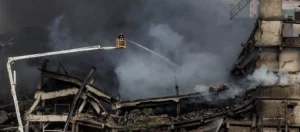GS-1: Urbanization – Urban Safety Infrastructure

Key Points:
- A tragic fire in a Kolkata hotel in the crowded Burrabazar area claimed 14 lives and injured 13, revealing deficiencies in urban fire safety and response.
- The six-storey building had only one staircase and no alternative exits, breaching fire safety regulations.
- A similar fire in Ajmer killed four, underscoring recurring safety failures in congested urban areas.
Urban Fire Risks:
- Smoke inhalation caused most deaths, a common issue in dense urban fires.
- Narrow lanes and congestion hindered fire engine access, a frequent urban planning flaw.
- Non-compliant designs, lacking fire exits and evacuation plans, worsened the incidents.
Persistent Neglect:
- Kolkata has faced multiple deadly fires, including the 2011 AMRI hospital fire (89 deaths).
- Repeated tragedies highlight weak enforcement of fire safety regulations despite reform promises.
Systemic Shortcomings:
- Many older city structures use flammable materials and lack modern safety upgrades.
- Unlike post-independence planned zones, old urban areas have not been redeveloped.
- Inadequate ventilation, escape routes, and narrow pathways impede effective fire response.
Scientific/Technical Terms:
- Fire Load: The quantity of combustible materials in a structure.
- Smoke Inhalation: A primary cause of fire-related deaths due to toxic gases like carbon monoxide.
- Retrofitting: Upgrading buildings with modern safety features, such as fire-resistant materials.
Significance:
- Urban fires expose governance failures in safety audits, building code enforcement, and disaster readiness.
- Cities like Kolkata must prioritize urban renewal, enforce the National Building Code, and enhance fire response capabilities.




